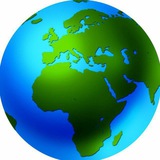tgoop.com/mapping_upsc_prelims/47
Last Update:
✅ Climate Change: It will worsen the situation by altering hydrological cycles, making water more unpredictable and increasing the frequency and intensity of floods and droughts.
Climate change impacts the water cycle by influencing when, where, and how much precipitation falls.
✅ It also leads to more severe weather events over time. Increasing global temperatures causes water to evaporate in larger amounts, which will lead to higher levels of atmospheric water vapor and more frequent, heavy, and intense rains in the coming years.
✅ Contaminated water resources: Regardless of improvements to drinking water, many other water sources are
contaminated with both bio and chemical pollutants, and over 21% of the country's diseases are water-related. Furthermore, only 33% of the country has access to traditional sanitation.
✅ Impact on Public Health: As its water reserves get dirtier and smaller, India is losing the capacity to safeguard public health, ensure farm productivity, grow the economy, and secure social stability.
✅Water Related Disasters: When water related disasters hit, they can destroy or contaminate entire water supplies, increasing the risk of diseases like cholera and typhoid to which children are particularly vulnerable.
▪️What are the ways and means of water resource management?
✅ Since there is a declining availability of fresh water and increasing demand, the need has arisen to conserve and effectively manage this precious life-giving resource for sustainable development. Given that water availability from sea/ocean, due to high cost of desalinisation, is considered negligible, India has to take quick steps and make effective policies and laws, and adopt effective measures for its conservation.
✅Besides developing water saving technologies and methods, attempts are also to be made to prevent the
pollution.
#mains
Source - OnlyIAS
BY Mapping
Share with your friend now:
tgoop.com/mapping_upsc_prelims/47
